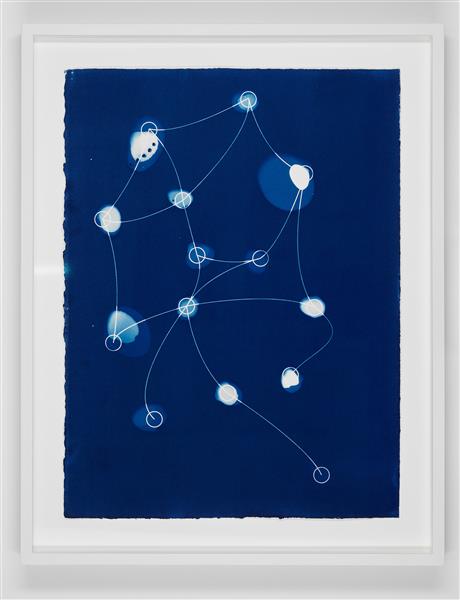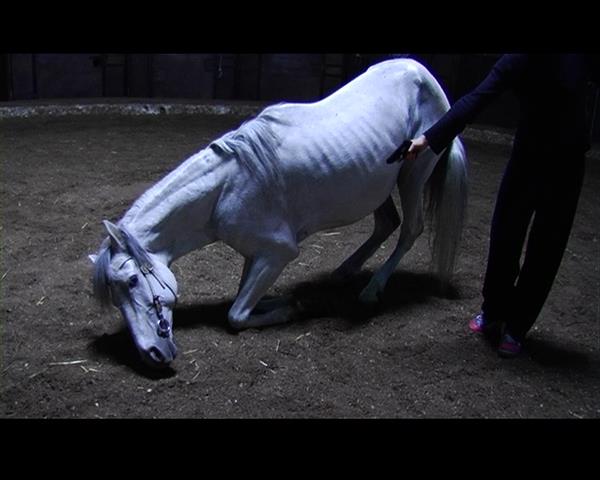MASS
Clemens von Wedemeyer
DVD
edition 3/10 + 1 AP
aspect ratio: 16 : 9; 2' 40'', looped
1998
Acquisition 2010
Inv. No. 0209
Entering the name “Wedemeyer” plus the term “video” in a search engine hardly produces any relevant hits. But they do appear when the artist’s name is combined with the word “film.” This difference is not unimportant. For a long time, the art scene has handled moving images rather carelessly in terms of both classification (which partly still applies) and presentation. “Video” has become an elastic term for everything that flickers and often serves as an excuse for artistic inadequacy. Since the 1990s, however, such artists as Isaac Julien, Sharon Lockhart, or Eija-Liisa Ahtila, who present their works in an art context, yet make a point of the specifics peculiar to the genre of film, have attracted quite some attention. They are familiar with both the finesses of the craft as such and its aesthetic and theoretical aspects.
The border traffic between “art film” and the visual arts attests to the maelstrom of an omnipresent and overpowering art business. There is no longer a dominant medium, and art offers itself as a huge receptacle. The admittance of such autonomous and remote subdisciplines as experimental film provides their exponents with new forums and, above all, a greater audience. Works by filmmakers that are presented at art biennials and offered by galleries are subject to a market logic that differs from that of films distributed via festivals and art house cinemas. This also entails changes in the reference systems employed. Clemens von Wedemeyer is at home in both worlds – his films are screened at short film festivals as well as in art exhibitions; yet the great attention they attract is owing to the magnetism generated by the art world. In the media, he is mostly referred to as artist, yet sometimes as artist and filmmaker: “Art and cinema speak different languages that are related to each other. I’m interested in both. These two languages combined offer a new practice that opens up space for new studies.”1
Although MASS is quite an early work,2 it is already informed by the entanglement of documentary and fictional aspects that is still typical of Wedemeyer’s art. Then a twenty-five-year-old art student in Leipzig, he intensively explored the strategies of experimental film. This holds particularly true for his use of found footage material and for his overlaying the pictorial information with elements relying on such techniques as scratching, blurring, and deceleration. The film sequences Wedemeyer used for MASS show crowds assembling for marches and demonstrations in the 1920s. They serve as raw material for a sequence of images based on passages from the Soviet revolutionary film The Battleship Potemkin (1925) in the course of which concrete street-life scenes dissolve into vibrating gray surfaces. Wedemeyer about his three-minute loop: “As soon as the viewer has directed his attention to some detail, layer is superimposed upon layer.”3
Similarly, image-based historical research attempts to extract the structures of mass gatherings from teeming crowds of people through the analysis of pertinent film documents or find answers to such questions as: Where was the police positioned? Who guided the masses? What was the trigger for violence or panic? Yet such research methods likewise end up in the no-man’s-land of blurriness.
Wolfgang Kos, 2011 (translation: Wolfgang Astelbauer)
1) Catrin Lorch, “Clemens von Wedemeyer,” in: frieze, no. 100, June/August 2006, 273.
2) Having initially pointed out the significance of the filmic aspect, it seems necessary to state that Wedemeyer’s first work was not a film, but a digital video.
3) Clemens von Wedemeyer, synopsis of the video MASS.
Continue readingExhibitions
Now, At The Latest. videos and other attractions from the evn collection, Kunsthalle Krems, Krems, 2015
Publications
Now, At the Latest, Maria Enzersdorf 2015, p. 3
evn collection. 2006–2011, Cologne 2011, p. 222–224

